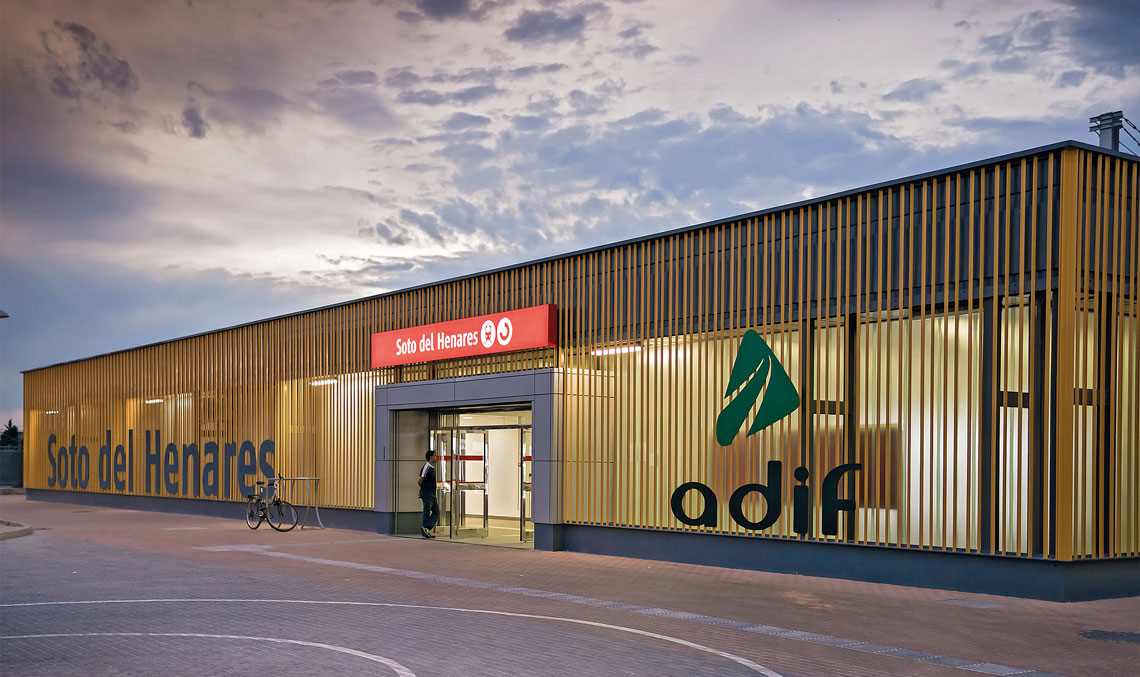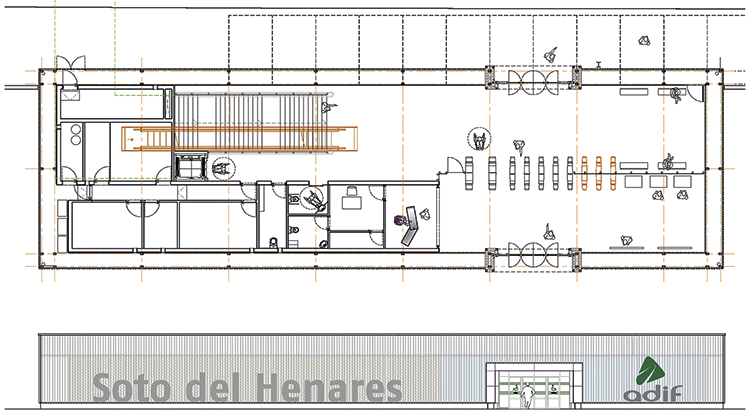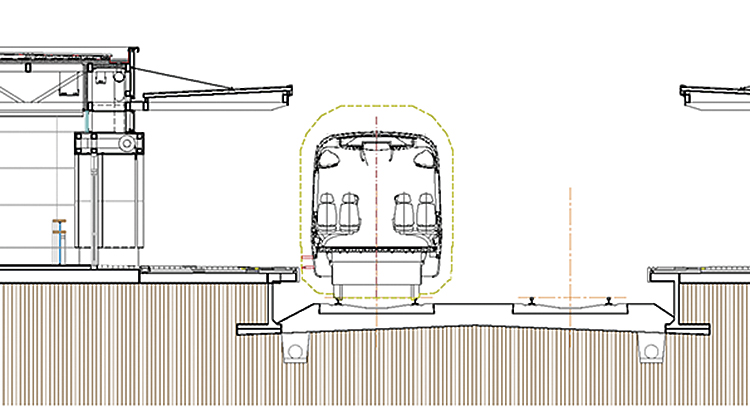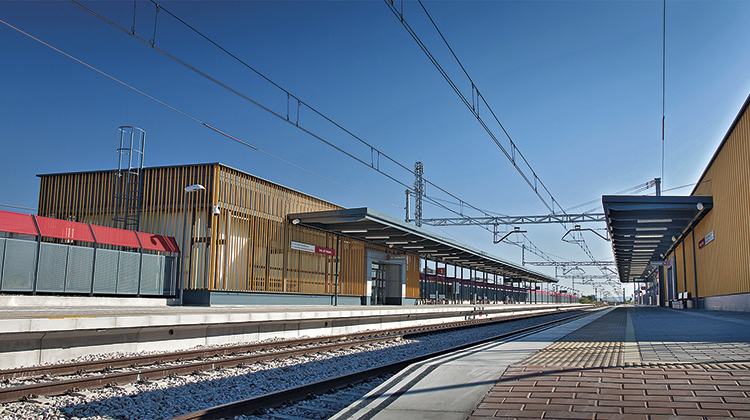Since last August, more than 20,000 residents of this new construction zone have been able to reach the centre of Madrid in 25 minutes thanks to the new halt, without having to go to the centre of Torrejón de Ardoz. Located in this Madrid municipality of 127,000 inhabitants in the north-east of Madrid, the new station belongs to the C7 commuter line and serves the districts of Soto del Henares, Mancha Amarilla and Zarzuela, a zone near the Hospital of Torrejón and the new Casablanca industrial estate. Ineco has carried out the architectural, structural and installation design, as well as construction management for Adif. It is a modular structure of porticos that eliminates the need for interior pillars (open plan) and can be easily adapted to any type of station. The main building, direction Alcalá de Henares, has a rectangular floor, a foyer with waiting areas, automatic ticket vending machines and six faregates, with the possibility of increasing this number to nine. It also has a space for offices, toilets and utility rooms.
Ineco has carried out the architectural, structural and installation design, as well as construction management for Adif
A modular and extendible design
The halt has two buildings, one for each direction. In the interior, all uses are distributed by independent building volumes (‘building within a building’). The station was designed with a capacity to receive 6,000 passengers a day, although the modular structure facilitates its future expansion.
Golden ratio
The geometry of the buildings is based on the golden ratio of a two-metre square, which forms rectangles of 2.8282 x 2m. When doubled they create a module of 5.6564 x 2m, and from the division of this module come all of the internal distances between porticos and different spaces are created.
A light box
The main building is laid out as a rectangular prism with two façades, which provides a maintenance area between them. While the “skin” tinges the interior-exterior light (‘light box’ effect), the outer layer generates permeability and allows the design to be changed.
Platforms
The platform edges are 1.75 metres from the track centres, with a width of 5 metres and a length of 210 metres, with 6 metre slopes at each end. Thanks to the 80 metres of canopy extending from the buildings, passengers are always sheltered when they access the platforms.
Other stations designed by Ineco
Ineco has extensive experience in drawing up architectural designs, as well as in construction management and technical assistance and the preparation of feasibility studies in different types of stations, both overground and underground.
- In Cercanías (commuter rail) we should highlight, amongst others, projects such as the Miribilla station in Bilbao, built at a depth of 50 metres; the two in the Málaga airport access and a few others in the Valencian town of Alboraya, all of which are also underground, or the modern Cercanías halt of the Manuel-Énova bypass of the high-speed line to Levante.
- With regard to modular stations, in 2009 it developed an innovation project taking a small halt in the north of Madrid, Las Zorreras, as a reference. A similar solution was also planned, the predecessor of that of Soto del Henares, for the Las Margaritas-Universidad station, in Getafe, in the southern zone of Madrid. Abroad, in 2011, eight modern modular stations were designed for the Bogotá Western Corridor in Colombia.
- With regard to the renovation of historical stations, we can highlight the design and construction management of the historic façade of Atocha (2012), that of the full renovation of Aranjuez station (2008) currently underway, or the modernisation works in around twenty Catalan stations (2009).
- As well as architecture projects, we can also highlight other services, such as technical assistance for the work of the new La Sagrera-Meridiana commuter station in Barcelona (2010) or the prior feasibility studies for the Belgrade light rail in Serbia, with 25 stations, 10 of them underground; or for the São Paulo commuter network in Brazil, which included the construction of nine stations and the renovation of 65 others.
- With regard to highspeed stations, Ineco has carried out around twenty projects, both in construction management and in drawing up architectural designs: this is the case for the stations of Puente Genil, Camp and Antequera-Santa Ana (2007), that of Vigo-Guixar or the projects in nine other stations of the Galician Atlantic corridor in 2010 (see article). Ineco has also worked in the construction management to adapt stations in the whole network for high speed: Santa Justa in Seville, Sants in Barcelona, Atocha in Madrid, Toledo, Zaragoza, A Coruña, Santiago and Ourense in Galicia, etc., as well as in that of enlargement of the Atocha railway complex and its new AVE terminal, begun in 2010.









